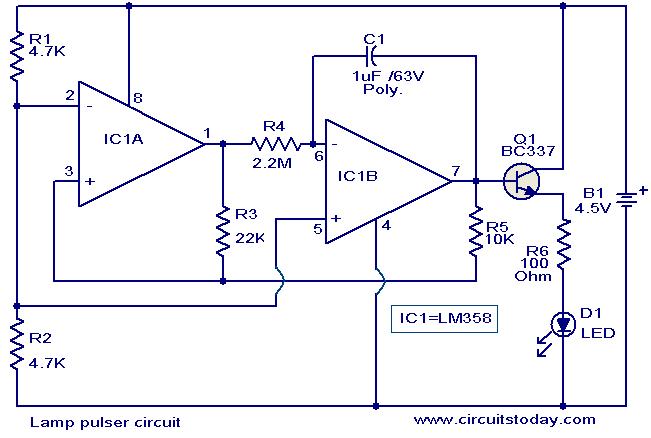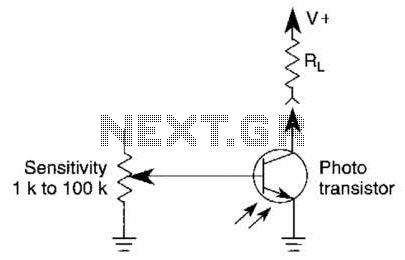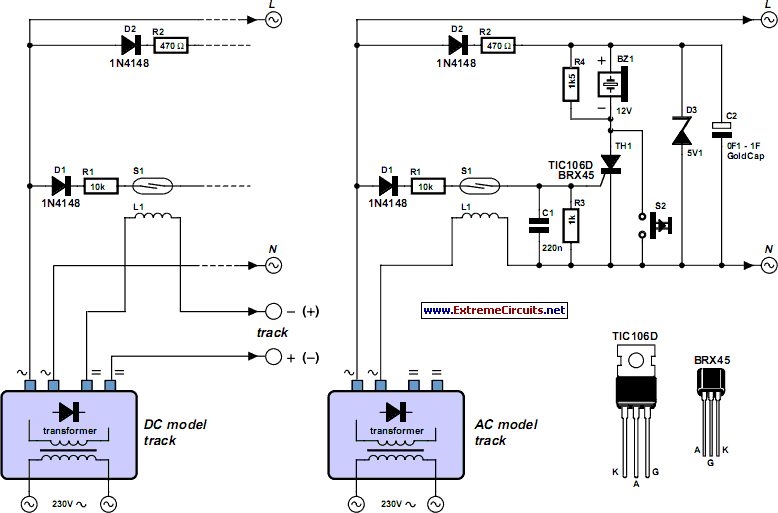
Lamp pulser circuit

This circuit is designed to gradually pulse an LED or a low-power filament lamp, creating a visual effect where the light transitions from an OFF state to full brightness and then back down to OFF. Such a circuit is particularly useful for decorative applications. It operates as a triangular wave generator utilizing the dual op-amp integrated circuit LM358. Both op-amps within the IC are employed for this purpose. The transistor Q1, a BC337 model, drives the load, which can be either an LED or a lamp. The timing components of the circuit consist of resistor R4 and capacitor C1, which are selected to achieve a timing cycle of approximately 5 seconds.
The circuit utilizes the LM358 dual op-amp IC, which contains two independent, high-gain, frequency-compensated operational amplifiers. The configuration for generating the triangular wave involves connecting one op-amp as a comparator and the other as a feedback oscillator. The output of the first op-amp is fed back to the inverting input of the second op-amp, which, along with the timing components R4 and C1, determines the frequency and duty cycle of the triangular waveform.
The selected values for R4 and C1 are critical for achieving the desired timing of approximately 5 seconds. The resistor R4 controls the charge and discharge rates of capacitor C1, which, in turn, establishes the timing for the LED or lamp to gradually brighten and dim. The BC337 transistor serves as a switch, allowing the circuit to control the current flowing through the load. When the output from the op-amps reaches a certain threshold, the transistor is activated, allowing current to flow and illuminating the LED or lamp.
This gradual pulsing effect can enhance the aesthetic appeal of various decorative setups, such as holiday lighting or ambient lighting in different environments. The simplicity of the circuit and the availability of the components make it an accessible project for both hobbyists and professionals interested in creating dynamic light displays.Here is a simple circuit that can be used to pulse an LED or a low power filament lamp. The effect is such that the LED lights up from OFF state gradually and then dims gradually. Such a circuit is very useful in decoration purposes. The circuit is nothing but a triangular wave generator based on dual opamp IC LM 358. The two opamps inside the IC i s used for the purpose. The transistor Q1 BC337 is used to drive the load (LED or lamp). The resistor R4 and capacitor C1 are the timing components of the circuit. Here the values of R4 & C1 are so chosen that the timing is around 5S. 🔗 External reference
The circuit utilizes the LM358 dual op-amp IC, which contains two independent, high-gain, frequency-compensated operational amplifiers. The configuration for generating the triangular wave involves connecting one op-amp as a comparator and the other as a feedback oscillator. The output of the first op-amp is fed back to the inverting input of the second op-amp, which, along with the timing components R4 and C1, determines the frequency and duty cycle of the triangular waveform.
The selected values for R4 and C1 are critical for achieving the desired timing of approximately 5 seconds. The resistor R4 controls the charge and discharge rates of capacitor C1, which, in turn, establishes the timing for the LED or lamp to gradually brighten and dim. The BC337 transistor serves as a switch, allowing the circuit to control the current flowing through the load. When the output from the op-amps reaches a certain threshold, the transistor is activated, allowing current to flow and illuminating the LED or lamp.
This gradual pulsing effect can enhance the aesthetic appeal of various decorative setups, such as holiday lighting or ambient lighting in different environments. The simplicity of the circuit and the availability of the components make it an accessible project for both hobbyists and professionals interested in creating dynamic light displays.Here is a simple circuit that can be used to pulse an LED or a low power filament lamp. The effect is such that the LED lights up from OFF state gradually and then dims gradually. Such a circuit is very useful in decoration purposes. The circuit is nothing but a triangular wave generator based on dual opamp IC LM 358. The two opamps inside the IC i s used for the purpose. The transistor Q1 BC337 is used to drive the load (LED or lamp). The resistor R4 and capacitor C1 are the timing components of the circuit. Here the values of R4 & C1 are so chosen that the timing is around 5S. 🔗 External reference





